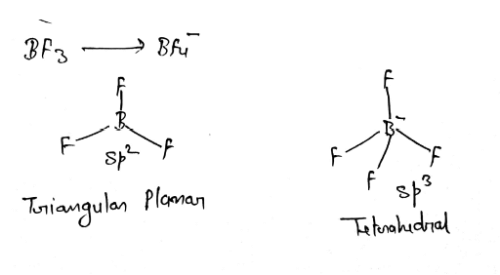Test: Chemical Bonding & Molecular Structure - 2 - JEE MCQ
30 Questions MCQ Test - Test: Chemical Bonding & Molecular Structure - 2
Which of the following molecules are expected to exhibit intermolecular H-bonding
I. Acetic acid
II. o-nitrophenol
III. m-nitrophenol
IV. o-boric acid
A : tetracyanomethane B : Carbondioxide
C : Benzene D : 1, 3-buta-di-ene
Ratio of σ and π bond is in order:
Which of the following models best describes the bonding within a layer of the graphite structure ?
In , the shape is square planer. The number of bond pair-lone pair repulsion at 90° are :
In which of the following molecules / ions all the bonds are not of equal length.
The critical temperature of water is higher than that of O2 because the H2O molecules has :
Compound with maximum ionic character is formed from :
Mg2C3 reacts with water forming propyne, C3 4- has
Which of the following has a geometry different from the other three species (having the same geometry)?
Which of the following molecule does not have open book structure.
The hybridisation and geometry of BrF3 molecules are :
Pick out the incorrect statement ?
Ethanol has a higher boiling point than dimethyl ether though they have the same molecular weight. This is due to :
A simplified application of MO theory to the hypothetical ‘molecule’ OF would give its bond order as
Which of the following contains electrovalent and covalent bonds ?
Which of the following species is paramagnetic ?
The volatility of HF is low because of :
Which of the following sets of characteristics leads to the increase in solubility of ionic substances ?
Dipole-induced dipole interactions are present in which of the following pairs?
Which one of the following conversions involve change in both hybridization and shape?
The molecule is not having 3c-2e bond.
Among KO2, AlO-2 ,BaO2 and NO+2 unpaired electron is present in :
Which has maximum dipole moment ?
Ethanol has a higher boiling point than dimethyl ether though they have the same molecular weight. This is due to :
Arrange the following in order of decreasing boiling point :
(I) n-Butane (II) n-Butanol (III) n-Butyl chloride (IV) Isobutane
Which of the following compounds would have significant intermolecular hydrogen bonding ?
HF, CH3OH, N2O4, CH4
For H2O2, H2S, H2O and HF , the correct order of decreasing extent of hydrogen bonding is :
A simplified application of MO theory to the hypothetical `molecule' OF would give its bond order as















